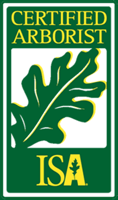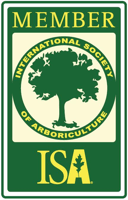Summer in South Florida can be both beautiful and brutal. While palm trees sway in the breeze and flowering shrubs reach their peak, the same heat and humidity that make tropical landscaping flourish can also push it to the edge. For many homeowners, a once-thriving landscape may suddenly show signs of stress: wilting leaves, yellow patches, dieback, or bare spots where vibrant plants once grew.
It is easy to assume a little summer wilting is normal, but plant health problems rarely resolve on their own. What begins as a minor issue in July could lead to full plant loss by August. That is why understanding landscape stress signs and acting quickly is critical to preserving the health and beauty of your outdoor space.
Subtle Signs of Serious Stress
Most signs of landscape distress are easy to overlook, especially when changes happen slowly. But plants communicate through their leaves, bark, roots, and canopy, and even subtle changes often signal underlying problems.
Here are early warning signs that your yard may be struggling:
- Wilting despite regular watering: If a plant wilts even when the soil is moist, it may be suffering from root rot, pest damage, or vascular issues.
- Leaf discoloration: Yellowing, browning, or speckled leaves can indicate nutrient deficiency, disease, or insect pressure.
- Sparse canopy or patchy growth: Thinning leaves or uneven foliage often suggest root or soil issues.
- Early leaf drop: If trees or shrubs begin shedding leaves in summer, they are reacting to stress.
- Mold, mildew, or fungus: These often appear as secondary problems after pests weaken plant defenses.
- Branch dieback: Dead or dry twigs at the tips of branches are often the first visible sign of decline.
- Stunted growth: If a plant that once thrived is no longer putting out new growth, it is likely under environmental or biological stress.
The key is to recognize that these symptoms are not just cosmetic. They point to systemic issues that can become permanent if not addressed promptly.
Common Causes: Heat, Pests, Disease, and Soil Issues
In South Florida, plant health is constantly challenged by a mix of environmental and biological stressors. Unfortunately, many of these problems occur simultaneously, making it harder to pinpoint a single cause without a thorough assessment.
1. Heat and Moisture Stress
Summer temperatures in South Florida often exceed 90 degrees, and the intense sunlight can burn delicate foliage. Compounding the issue, heavy rains can saturate roots one week and be followed by drought conditions the next. Plants may suffer from both waterlogging and dehydration in the same month.
Turfgrass, ornamentals, and young trees are especially vulnerable during weather swings. Without proper root structure and mulching, their ability to regulate water and temperature is compromised.
2. Insect Pests
Summer is peak season for many harmful pests. Whiteflies, spider mites, aphids, and scale insects become more active in hot, humid weather. These pests feed on plant tissues, interrupt nutrient flow, and leave behind honeydew that attracts mold.
Infested plants may appear wilted, discolored, or sticky. If left untreated, entire canopies can die back, and nearby trees and shrubs can become infested within weeks.
3. Fungal and Bacterial Diseases
With high humidity comes increased risk of foliar and root diseases. Black spot, powdery mildew, leaf spot, and root rot all thrive in warm, moist conditions. Once established, fungal diseases can be difficult to eliminate without professional care.
Symptoms include leaf spotting, blackened edges, mushy stems, or trunk lesions. Trees may exhibit crown dieback or abnormal leaf shedding.
4. Poor Soil Conditions
Many South Florida properties have sandy, nutrient-poor soil or soil that has been compacted during construction. Without proper organic matter and drainage, roots struggle to absorb nutrients and oxygen. Even when fertilizers are applied, plants may not benefit if the soil is chemically unbalanced.
Soil that is too acidic, too alkaline, or lacking in micronutrients can all contribute to the slow decline of trees and shrubs, even when other care practices seem appropriate.
Why Issues Overlap and Compound
One of the biggest challenges in managing plant health is that problems rarely happen in isolation. A tree under heat stress is more vulnerable to insect attacks. A plant battling pests may develop a fungal infection. A root zone damaged by poor drainage can become an entry point for disease.
These overlapping stressors create a downward spiral:
- Environmental stress weakens the plant’s natural defenses.
- Pests take advantage of the weakened plant and further reduce vigor.
- Fungus or bacteria invade, often through wounds or decaying areas.
- Growth slows, and recovery becomes more difficult without intervention.
Because of this compounding effect, what starts as a small yellow patch or minor wilt can become a full-blown landscape failure within a single season. That is why early identification and treatment are essential.
Professional Diagnosis vs Guesswork
While it may be tempting to self-diagnose landscape issues based on symptoms or online advice, plant health care is more complex than it appears. Many conditions share similar symptoms. Yellowing leaves, for example, can indicate too much water, too little water, poor drainage, pest pressure, or disease. Treating the wrong problem wastes time and money, and in some cases, worsens the situation.
A certified arborist or plant health care specialist uses several tools to make an accurate diagnosis:
- Soil analysis to determine nutrient levels, pH, and compaction
- Visual inspection of bark, roots, leaves, and branches
- Pest identification using magnification or trapping methods
- Moisture meters to assess irrigation and drainage effectiveness
Professional evaluations provide data-driven insight into what your landscape really needs. With the right diagnosis, treatments can be targeted and effective, improving plant health without overcorrecting or using unnecessary chemicals.
How Total Plant Health Care Can Help
Zimmerman Tree Service offers a comprehensive solution for landscape stress: Total Plant Health Care (TPHC). This proactive program combines expert analysis, science-based treatments, and ongoing monitoring to keep your landscape healthy year-round.
Here’s how it works:
1. Initial Walkthrough and Assessment
Our team visits your property to assess overall landscape condition. We identify areas showing stress, evaluate plant variety, and note symptoms of potential pest or disease activity.
2. Soil and Site Testing
Understanding your soil’s composition is essential. We perform chemical and physical tests to uncover drainage issues, nutrient deficiencies, or compaction.
3. Customized Treatment Plan
Based on findings, we create a plan that may include:
- Targeted fertilization using slow-release formulas
- Soil amendments to improve structure and biology
- Pest control using systemic or organic treatments
- Fungicide or bactericide applications as needed
- Root zone aeration for improved oxygen exchange
4. Ongoing Monitoring
Seasonal visits ensure that your trees and plants stay healthy and that new problems are caught early. We adjust treatments based on weather, growth, and feedback.
5. Integrated Care
TPHC is not a one-size-fits-all service. It is tailored to your landscape’s unique needs, whether you have native palms, tropical ornamentals, shade trees, or a mix of all three.
By combining all elements of plant care under one program, we provide peace of mind and consistent results. Your yard stays healthier, looks better, and is far more resilient in the face of South Florida’s seasonal challenges.
Schedule a Plant Health Walkthrough Today
If your landscape is showing signs of stress this summer, do not wait until it is too late. Wilting leaves and thinning branches may seem like seasonal changes, but they are often the first signs of deeper problems.
Zimmerman Tree Service is here to help you protect and preserve the beauty of your outdoor space. With our Total Plant Health Care program, you receive expert guidance, targeted solutions, and long-term support from a team that understands South Florida’s unique environment.
Call 561-968-1045 or visit zimmermantreeservice.com to schedule your plant health walkthrough today.
Let us help your landscape recover, thrive, and stay strong through the summer and beyond.





